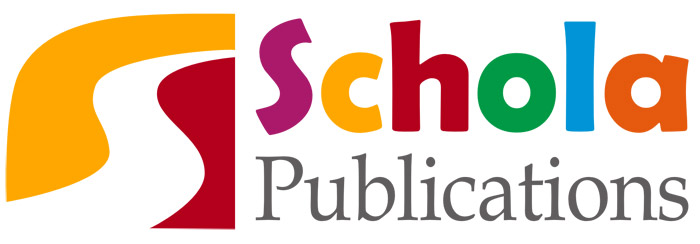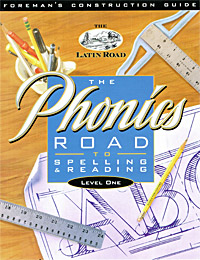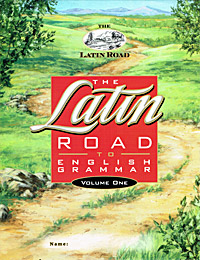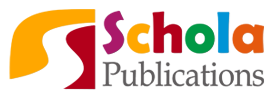The PHONICS Road FAQs
Who watches the video, teachers or students?
From the beginning I have included in my video presentations all the training, helps, and resources that a parent or teacher would need to teach students all their language arts with ease. Many teachers train themselves with the videos then teach the students as I have modeled. This is very successful but is a bit more time consuming.
My best recommendation for busy parents and teachers is to let me directly teach your students via the video presentations and have them do their written work as I teach them. This lets students glean a lot of insights from a teacher's point of view and gives the parents and teachers a break from the responsibility as master teacher. Instead of the majority of written work having to be dictated by the teacher, the students can "work" with me on the video to complete their written notebook.
The completed pages included in the Foreman's Guide (Teacher's Blueprints) can be used by the students as copy work, to be completed on their own after the presentations. This has proved very successful especially during the past 10 years as students, parents and teachers have become more busy.
Do you have a written script?
If I thought that handing you a script to read to your student was efficient, I would have chosen that means over 25 years ago from the very beginning. It is definitely a lot cheaper to hand you a large script rather than the expense of modeling and coordinating all the details of your language arts using today's technologies. My experience is that a script is limiting. On video I can teach directly to your student (and you) ensuring that neither of you misread or misinterpret an explanation, mispronounce letters or words, or forget a concept or skill from previous lessons.
With my 35 years of teaching experience, I am always there to lead your students through the consistent process of building English, reminding them of what they might forget, and surprising them with interesting tidbits about all aspects of English, literally the 'whys' that they have probably never heard before. My videos are rich with information, insights, stories, and experience from my years of teaching these skills to thousands of students, parents, and teachers.
What is meant by explicit phonics?
Explicit phonics moves from the smallest part to the whole. Students first learn the tools of English, the letters and letter teams, along with the sounds they represent. They then build out from there - from patterns to syllables and then the whole word. The PHONICS Road to Spelling and Reading teaches these tools explicitly and systematically.
By contrast, implicit phonics moves from the whole to the parts. A fixed number of words are taught each year as whole words. Students must make their "best guess" as to what the word is by its shape, beginning and ending letters, any context clues from the rest of the sentence or any accompanying pictures. If they can't figure it out from context, then they come back and go from the whole to its parts. Research has shown that implicit phonics is not as effective as explicit phonics.
Why do you not teach spelling and reading separately?
Actually, I do not recognize spelling and reading as separate subjects but as extensions of one another. In fact, I do not teach reading as a separate subject. The purpose of reading is to learn what the author has to say, not to learn phonics. There are a number of curricula on the market today that claim to teach explicit phonics (building from the smallest component to the whole) and yet insist that you teach reading first (and separately) from spelling. To me that makes no sense.
The smallest components of English are the letters and letter teams that represent sounds and are the tools to build words. The words that they learn to build (spell) they then naturally read. Therefore, spelling is a logical pre-requisite to reading, and in The PHONICS Road, spelling, handwriting and reading are practiced in a systematic logical sequence.
Accurate spelling guarantees fluent reading. A student does not need to resort to pictures or other contexts, and his reading flows easily. That is the reason why my students are able to enjoy quality literature earlier than others.
How are spelling, handwriting, and reading related?
In The PHONICS Road we learn how English words are built and why they are built the way they are. I teach students the tools of English and the process of building with them: Hear-Say-Write-Read. A student learns to hear a word and assigns the correct symbols to the spoken sounds. As he says the word, his mind directs his hand to write it, building the word according to the spelling rules he is learning. Finally, he sees what he has written and reads it. Practicing this process from simple words all the way through high school vocabulary over four years makes a student comfortable and confident with spelling, writing, and reading.
How important are spelling rules?
The spelling rules are not magic but provide the reasons why a word uses certain letters/letters teams or are ordered the way they are in sequence. They are not taught in isolation but are unfolded as they are applied daily to our ever-growing list of high-frequency words. In this way students learn how to reason through the building of words, not just use the spelling rules as a crutch for memorizing whole words.
What is the value of marking the spelling words?
The marking system in The PHONICS Road helps us to define the way our language works. It causes the students to analyze a word and respond with a kinesthetic action that reinforces the correct spelling. This simple system of underlining, numbers, x’s and brackets, tells us how to pronounce words that are spelled the same but are pronounced differently, which letters or letter teams are used, which silent final e is used, and which sound of the letter's sequence is used, etc. The marking system is the bridge that connects spelling to reading.
How do you choose the words for the students to build and practice?
Actually, I do not choose to teach my students from a controlled vocabulary that teachers often use to isolate whole words for memorization. Instead I use the Extended Ayres Spelling List of high frequency words which provides a useful platform to learn and practice all the letters, letter teams, and spelling rules. These words are used for spelling, vocabulary development and grammar. They are used to learn parts of speech, to build derivatives, to write simple compound and complex sentences and to apply capitalization and punctuation rules. The words listed in controlled vocabulary lists are often low frequency and are not of immediate use for daily reading and writing practice.
Why Levels, And Not Grades?
The levels of The PHONICS Road to Spelling and Reading do not necessarily correspond to grade levels, but skill levels. So unfortunately, you cannot jump into the middle of the study as each level builds upon the previous one(s). For example, about 3/4 of the spelling rules are introduced in Level One along with their foundational explanations and detailed practice that I do not necessarily repeat in later levels.
Although most students are between the ages of 5 and 7 when they begin Level One, there are many families with struggling older students who choose to use the Velocity Tracks with the goal of accelerating them through the foundations of Levels One and/or Two to get them more quickly to the rigors of Levels Three and Four. By the end of Level Four a student is building high school words, diagramming complex sentence structures, finishing good writing skills having completed four literature studies, and completing a second year of introduction to Latin. For a step-by-step assessment, click on the link, Where Do I Begin?










